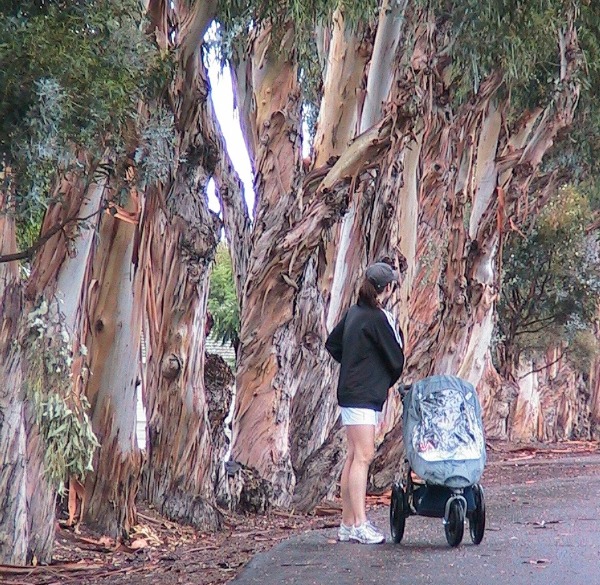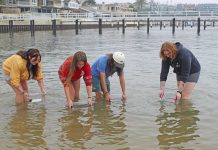
More than 100 blue gum eucalyptus trees lining a popular bike and walking trail in the Castaways pose a serious safety threat, according to risk assessment documents and photographs obtained by the Newport Beach Independent.
Despite the fatal fall of a eucalyptus onto the car of Haeyoon Miller in September, which prompted citywide inspections that in October and November identified many of the Castaways trees as imminent threats, the trees remain along the trail and no warnings have been issued or posted.
The trail, dubbed the “Groves Bike Trial” by an arborist contracted by the city to inspect the trees, stretches from the corner of Dover Drive and Westcliff Drive to a bluff overlooking Upper Back Bay. The trail is lined by the large trees that average more than 40 feet tall.
After the September incident, city officials hired an outside consultant, R. Dan Jennings and Associates of Huntington Beach, to assist their own in-house tree specialists to determine the danger posed by similar trees throughout the city.
Officials have advanced a plan to address the safety of the trees and dozens of trees have been removed from Irvine Avenue, Corona del Mar and other areas of the city.
Earlier this month the City Council overruled the Parks Beaches and Recreation Commission, which had voted to keep a row of blue gums that lined Holiday Road just off Irvine Avenue. The council ordered the trees cut down, due to the danger they posed, as identified by Jensen.
In reports obtain by the Independent, Jensen details the threat posed by the blue gums lining the popular Castaways bike and walking trail. (View the reports here.)
Jensen began inspecting the large stand of trees on Oct. 7. In a report dated Oct. 20, Jensen details extensive safety issues with the trees – describing multiple issues of root rot, fungal growth and beetle infestations. He also describes how some of the trees “grow above residences and targets are bedrooms.”
Jensen’s October report uses a hazard scale of 1 through 12 to rate the threat posed by the trees. According to Jensen “the system uses a scale of 1-12 the higher number having the tree at the most risk of failure. Many of the trees on site are rated 9, 10 and 11.” In his October report Jensen recommended that trees rated 9 or above be removed as soon as possible, for public safety.
Jensen urged immediate removal of about half-dozen of the worst-hit trees. In a document entitled “The Overall Risk Rating And Action Thresholds,” the threat posed by the blue gum eucalyptus trees rated at 11 on his scale is described like this: “The tree, or a part of it has reached a stage where it could fail at any time.”
“Action to mitigate is required within weeks rather months,” Jensen wrote two months ago. “By this stage there is not time to hold public meetings to discuss the issue. Risk reduction is a clearly defined issue and although the owner may wish to inform the public of the planned work, he/she should get on with it to avoid clearly foreseeable liabilities.”
A visual check of the trees by the Independent last week showed that the trees in question remain.
The Independent also documented extensive fungal growths known commonly as “sulfur conks” on various trees on the trail.
The trees on the Castaways Groves Trail were again inspected by Jensen on Nov. 10.
The Independent has also obtained that report, which also can be viewed here. In this report, Jensen details additional information about the trees and their potential hazard to the public.
Jensen also makes this very clear statement: “A tree may have extensive rot on the inside and never show a fruiting body. While there are other signs for an arborist to look for when trying to determine if a tree is suffering from this disease, the observance of the fruiting body is a sure sign of the disease.”
Municipal Operations Director Mark Harmon, whose department is responsible for tree maintenance and removal, said that city workers had been focused on the Holiday Road trees and that city experts and Jensen would be again inspecting the Castaways trees this month.




